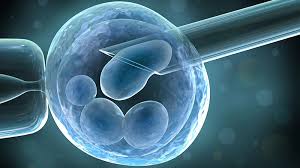Endoscopy is a diagnostic process that involves inserting a narrow, lighted tube (called an endoscope) into the uterus to see inside and check for any infections, illnesses, or abnormalities. Hysteroscopy and laparoscopy are the two types of endoscopic procedures performed most commonly.

Hysteroscopy is the process of observing the uterus using an endoscope that is inserted via the cervix. It provides a way to both diagnose issues with the uterine cavity as well as a way to fix the majority of issues (operative hysteroscopy). Tumours like polyps, fibroids, anomalies like septum, etc., are common disorders that may be addressed with hysteroscopy.
Hysteroscopy is an effective method for treating a multitude of conditions in the uterine cavity, including:
Laparoscopy for the treatment of fertility problems is a minimally-invasive surgical procedure. The process typically lasts between 30 and 45 minutes and may be done under local or total anesthesia. To make the organs visible during the surgery, the abdomen is pumped with gas, including nitrous oxide or carbon dioxide.
Infertility and other common gynecologic problems could be better understood with the help of crucial information that can be gleaned by analyzing a woman's internal pelvic anatomy. Laparoscopy and hysteroscopy are two procedures that allow a direct view of the pelvic organs. If an external medical evaluation cannot find a problem, it may be found using laparoscopy or hysteroscopy. Depending on the specifics of infertility case, one or more of these treatments could be suggested to you as a module of your treatment for infertility. Both diagnostic (only seeing) and surgical (looking and treating) procedures, such as laparoscopy and hysteroscopy, may be performed using endoscopy techniques.
It's possible that your doctor may suggest you have a diagnostic laparoscopy so they can examine the outside of your uterus, uterine cavity, fallopian tubes, ovaries, and the inside pelvic region. Surgeons with experience in these areas should only conduct diagnostic and surgical treatments. Hysteroscopy, performed for diagnostic purposes, allows for a view within the uterine cavity. If an abnormal condition is found during the diagnostic process, it is frequently possible to fix it at the same time using operative laparoscopy or operative hysteroscopy. This eliminates the need for a second surgery.
General anesthesia is used during laparoscopic surgery. To prevent post-operative discomfort, women are given a particular course of analgesic drugs both before and following the treatment.
We provide a full range of in-house laparoscopic and hysteroscopy facilities. A live transmission system is offered, which transmits the ongoing process to the screening room so family members may observe the procedure and converse with the doctor about corrective steps that can be done in a single sitting without the patient needing to have a repeat operation.